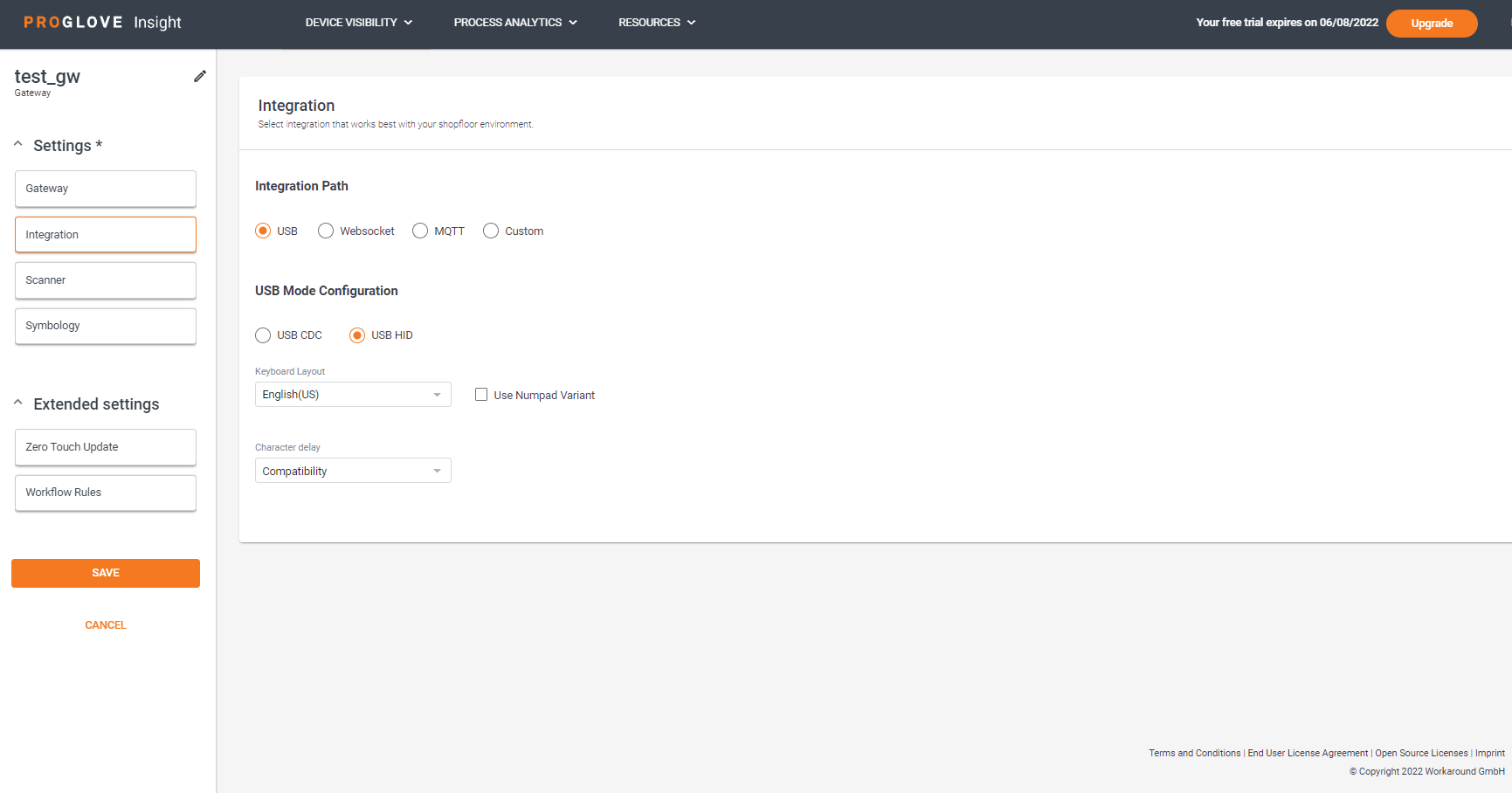Integrations
When creating a configuration, the Integration Path section allows you to select your preferred way of integrating Gateway with your system as well as configure several Gateway connectivity options.
Integration Path
The Integration Path section allows you to select how the Gateway will communicate with your system and transfer the barcode content scanner by the connected scanners.
USB HID
The USB HID option allows you to transfer the barcode content as keyboard input to the connected host.
To select this path, select USB under Integration Path and USB HID under USB Mode Configuration.

For the USB HID integration path you can select:
Keyboard Layout - default language keyboard layout (e.g. English, German, Finnish, Czech, etc.)
Character Delay - Fast, Medium, or Compatibility mode (when sending data, some apps need longer to input characters)
Numpad Variant - The numeric keypad is used for entering numbers
USB CDC
The USB CDC option allows you to transfer the barcode content through a virtual communication port (input as a string).
For this integration path you can select:
Baudrate - rate at which information is transferred in a communication channel
Streams API - select this option to enable communication using our Streams API, a two-way, message-based .JSON protocol based on the USB CDC integration path

WebSocket and MQTT
The WebSocket and MQTT options allows you to transfer the barcode content using the specified application protocol by automatically creating an output Action in the Workflow Rules. Both of these integration paths are relying on the Wi-Fi connectivity.


Important
The WebSocket and MQTT integration path requires you to provision the Gateway with Wi-Fi network credentials and the WebSocket or MQTT configuration file. To learn more, see WebSocket configuration or MQTT configuration
Custom
The Custom option allows you to select one of the above integration paths as a way of sending barcode data and customize the output behavior by creating specific Workflow rules.
Warning
When selecting the Custom integration path, if you do not define the output behavior manually in the Workflow Rules (i.e. Action), the barcode content will not be sent.
Although the main purpose of the Custom integration path is to customize what happens to the output barcode content, you can also enable sending data over both USB and WebSocket.

In this case, you must define a Workflow Rule for both outputs - Output USB and Output WebSocket.

Note
If the Gateway is connected via USB to a power source but not a host system, you must select Disabled under USB Mode configuration and select WebSocket or MQTT configuration. If you leave one of the USB options enabled, the Gateway will keep trying to send data using that output and will not work.